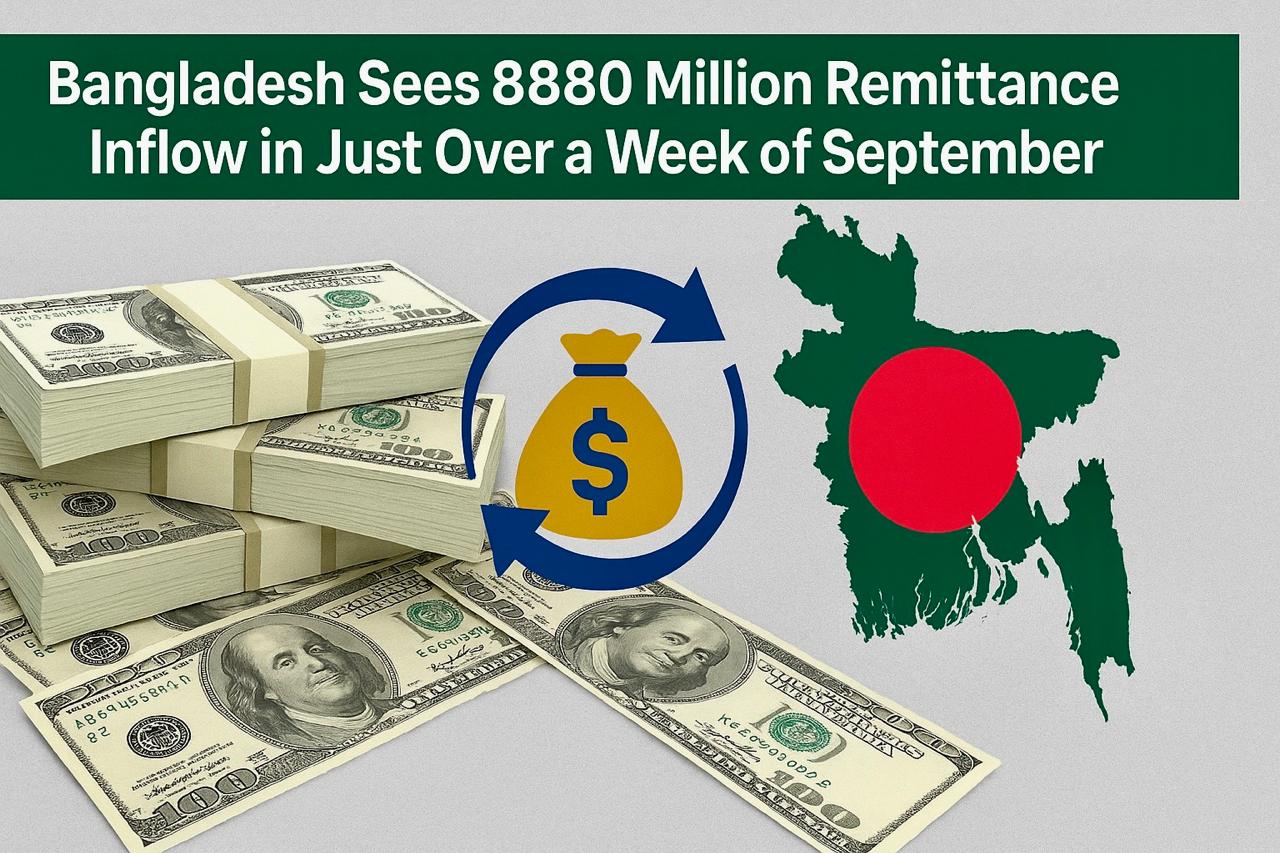Bangladesh received $880 million in remittances during the first eight days of September, according to Bangladesh Bank data. The inflow reflects a sharp rise compared to the same period last year and highlights the growing reliance on overseas income to support the country’s economy.
Strong Early September Growth
Between September 1 and 7, expatriates remitted $771 million, up from $585 million during the same days in 2024 — an increase of 31.9%. Adding September 8, the figure climbed to $880 million, showing continued strong inflows.
Fiscal Year Performance
From July 1 to September 6, 2025, Bangladesh recorded $5.416 billion in remittances, compared to $4.694 billion in the same period last year. That represents a 15.4% year-on-year increase.
In the first three days of September, Bangladesh received $343 million, up from $307 million in 2024 — a growth of 11.6%.
Key Drivers
- Reduced exchange rate gap between official and informal markets encouraged use of banking channels.
- Government incentives such as cash bonuses boosted inflows.
- Seasonal demand ahead of festivals and family obligations increased transfers.
Economic Impact
Remittances are Bangladesh’s second-largest source of foreign currency and a critical tool for stabilizing reserves. The recent surge helps ease pressure on the balance of payments, supports the taka, and strengthens foreign exchange holdings at a time of global uncertainty.
Global Standing
Bangladesh remains one of the world’s top remittance-receiving countries, with over 10 million citizens abroad. The consistent inflow places the country among the leading global beneficiaries of expatriate earnings.
Outlook
Economists project that if the current pace continues, September’s remittance could surpass $2 billion. Sustaining this trend will depend on maintaining currency stability, quick transaction processing, and limiting informal hundi transfers.
